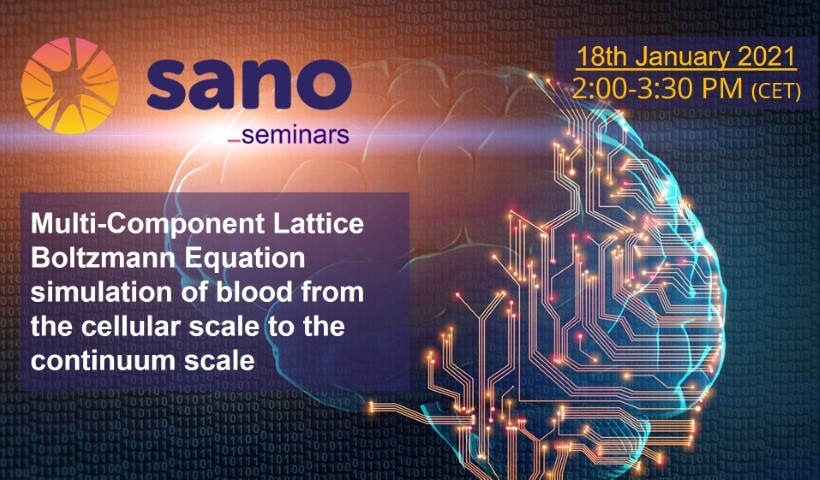Abstract
Lattice Boltzmann Equation (LBE) simulation method is a meso-scopic (distribution function-based) numerical technique, well adapted for computing certain classes of fluid flow, including complex multi-component flow, not least because of an intrinsic parallel implementability.
Blood is a colloid, comprised of plasma (an incompressible Newtonian fluid) in which are suspended a high concentration of very deformable vesicles, typically of micron size. The complex rheological properties of blood, when regarded as a continuum (e.g. constitutive relations between hemodynamic shear rates and stress) rest on this cellular-scale structure. Furthermore, flow modalities at the capillary scale cannot be understood without recourse to blood’s “micro-structure”.
This talk will seek to show how one particular multi-component LBE method, for immiscible fluids (the chromo-dynamic variant [1,2]) may be modified to encapsulate the micron-scale dynamics of blood, contrast this approach with other, more mature LBE-based methodologies, such as Hemecell [3], and consider some relevant applications of the method which exploit its key advantages.
[1] S V Lishchuk, I Halliday and C M Care Phys Rev E 77 (3) ( E036702), 2008
[2] I Halliday, T J Spencer, S V Lishchuk, C M Care and G Pontrelli, Phys. Rev. E 87, 023307, 2013
[3] https://www.hemocell.eu/

Author
Ian Halliday
Sheffield Hallam University, United Kingdom
Date and time
Monday, 18 January 2021, 2:00-3:30 PM (CET)
Venue
- Online via ZOOM
- Join via ZOOM on seminars.sano.science




